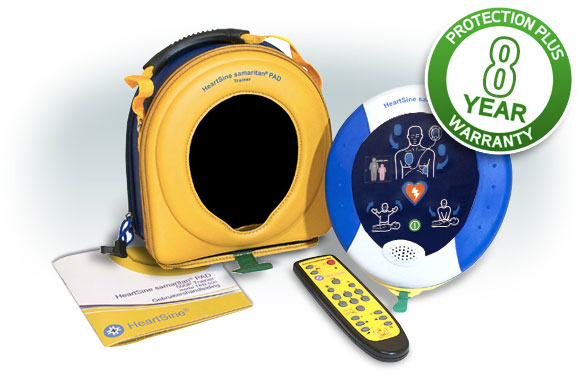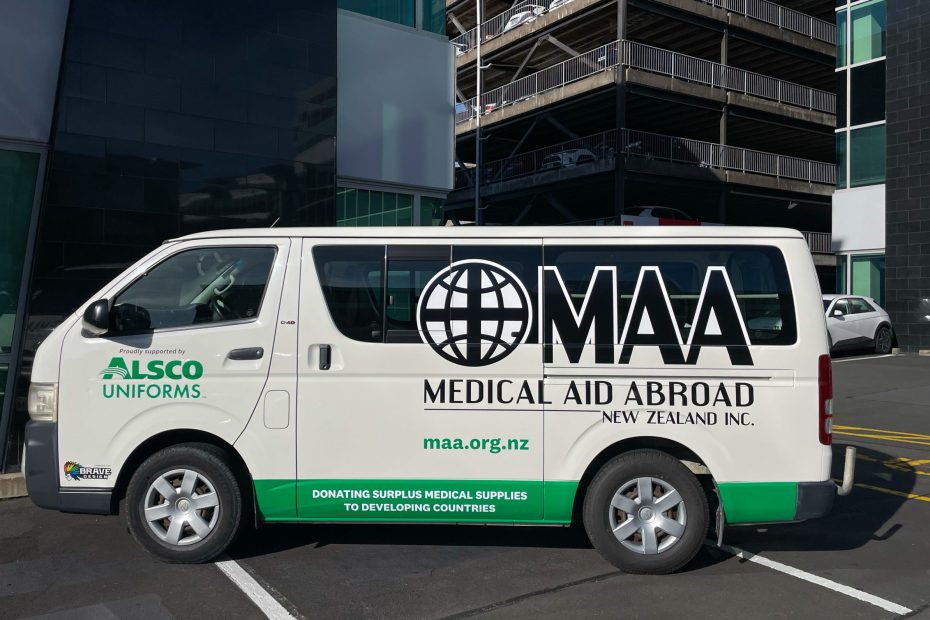AED stands for Automatic External Defibrillator. This is a small and light electronic device that is used to diagnose and treat certain life-threatening heart conditions in the case of an emergency.
It is done by the method of defibrillation. Automatic External Defibrillator is portable and runs on batteries.
An Automatic External Defibrillator should be in all workplaces in New Zealand since it is of essential importance in the case of emergencies.
Heart disease and different heart conditions can lead to an irregular heart rate, called dysrhythmia which can be life-threatening.
The causes of such conditions can be varied but include previously suffered heart attacks, certain substances or congenital heart conditions – heart conditions that you have been born with.
What Is an Automatic External Defibrillator Used For?
An Automatic External Defibrillator is used for the first aid response in case of a sudden cardiac arrest (SCA). More precisely, when a person is suffering from an abnormal heart rate which usually happens as a cause of a cardiac arrest. The two most common reasons for the AED are Ventricular Tachycardia (V-Tach) and Ventricular Fibrillation (VF).
An AED is used to administer an electric shock that should trigger normal heart function. When a sudden cardiac arrest happens, the heart loses its rhythm, which is essential for sustaining a human life. Usually, the lower parts of the heart start with the rapid and erratic beating that doesn’t pump enough blood and doesn’t do it properly.
That is the ventricular fibrillation. When it occurs, it means that the heart is not performing its function properly, and the person suffering from VF will probably experience a rapid and severe drop in blood pressure and lose consciousness. If not treated with an AED and CPR instantly, this can be fatal.
How Does an AED Work?
An AED releases electrical current into the heard of those suffering from the VF or some other abnormal, life-threatening heart rhythm. The idea is to stop the heart for a split second and reset it. In that way, the heart should automatically resume its natural rhythm.
The AED will not release the electric current unless required. It has an analyser in it that checks how the heart is beating and it releases the current only when it picks up the signs of abnormal heart rate. If it ‘sees’ that there are signs of VF or V-Tach, it will release the current of 150 to 360 Joules. That’s enough to restart the heart without causing permanent or irreparable damage.
That is why it is important that the AED is used properly.
The electrodes of the AED should be placed on the patient’s chest. Through them, the heart rate is measured and analysed by the AED. If they show that the person is suffering from VF or another life-threatening arrhythmia, the electrical shock is administered through the pads.
Does an AED Work on a Beating Heart?
Yes. An AED works on a beating heart. Moreover, it only works on a beating heart. An AED will not try and shock the heart that is not beating. Once you place the electrodes on a patient’s chest, the analyser looks for the signs of the beating heart and establishes whether the current needs to be administered or not.
The reason for administering the current are the signs of erratic and irregular heart rate. Therefore, if the heart is not beating, the AED will not detect the VF or V-Tech and won’t administer the shock.
What Are the Steps for Using AED?
There are several steps for using AED that you should be aware of before the situation occurs. Also, keep in mind that a lot of instructions are already on the AED display as you perform the first aid.
https://www.youtube.com/watch?v=1NUHslv2jOY
-
Turn on the AED.
Some AEDs are battery operated, so you won’t need to plug them in. Check your AED right now and learn if it is battery operated or needs a socket. This will save you time one day when you need it instantly.
-
Remove the patient’s shirt.
The chest of your patient needs to be bare, dry and with no patches on them. There should be nothing that could get in the way of direct contact of your AED and your patient’s skin.
-
Position the pads.
Sometimes the pads are already connected to the AED. Sometimes, these pads need to be plugged into the AED. Make sure they are plugged in before proceeding.
-
Warn everybody to stand clear from the patient.
Nobody should be in direct contact with the patient. The electric shock may transfer to them, as well and that is very dangerous. This includes the person who is using the AED. Make sure that you are not touching the person accidentally with your legs, body or in some other way – not just with your hands.
-
Press the analyse button.
Watch the instructions from the AED. It will analyse the heart rate and administer the shock if necessary.
-
Perform CPR.
AED will check if the electric shock needs to be repeated. In the meanwhile, perform the CPR and make sure you analyse the patient using AED again
It is important that you use your AED during the first 3-5 minutes after the cardiac arrest has happened and the person has lost consciousness. The quick and swift reaction is essential and it is the only way to save somebody’s life.
Therefore, what you can do right now is check if your workplace has an AED, where they are and how they work. That will save you precious minutes if the situation arises. Inspire others to do so as well, since they will be the ones to use the AED on you if you are unfortunate enough for an SCA to happen to you.
Work in a school? Create a safe school environment for all the children you’re responsible for at your workplace.
Apart from an AED to save lives, you must meet the basic school washroom legal requirements and provide all the students and stuff with a safe and healthy environment.
Fresh & Clean School Washroom Guide teaches you all you need to know about it.
Your workplace doesn’t have an AED? Contact Alsco New Zealand immediately and get your AED.
You don’t have to invest thousands into an AED. You can rent it for a flat affordable annual fee and get it checked regularly without additional cost.






